Best weird and wonderful niche Linux distros of 2025
Try something different with Linux

We list the best weird and wonderful niche distros, to make it simple and easy to find different and interesting Linux options to try out.
This is especially for those who are fed up with the bog-standard Ubuntu, Debian, Fedora and their ilk. Looking for a distro that reflects your individuality? In this guide we've discovered some of the quirkiest distros that Linux has to offer.
But just because they are different doesn’t mean they aren’t useful. In fact, all of the distros have a niche following and their dedicated community of users and developers has helped power them through the years.
We’ve analyzed various distros to find the best weird and wonderful niche Linux distros for you. We looked at what types of users they’d be suited for, how lightweight and resource-easy they are, the tools they ship with, the available documentation, and how steep their learning curve is.
Read on to find out more about each of these interesting distros. Before we begin, however, do note that not all of these distros are suitable for everyday use, which is why even though we encourage you to try them all, make sure you do so in a Live environment or within the safe confines of a virtual machine, rather than install them on a physical machine.
Looking to develop your Linux skills? These are the best Linux training providers and online courses.
The best weird and wonderful niche Linux distros in 2025 in full
Why you can trust TechRadar
Best niche Linux distro for engineers
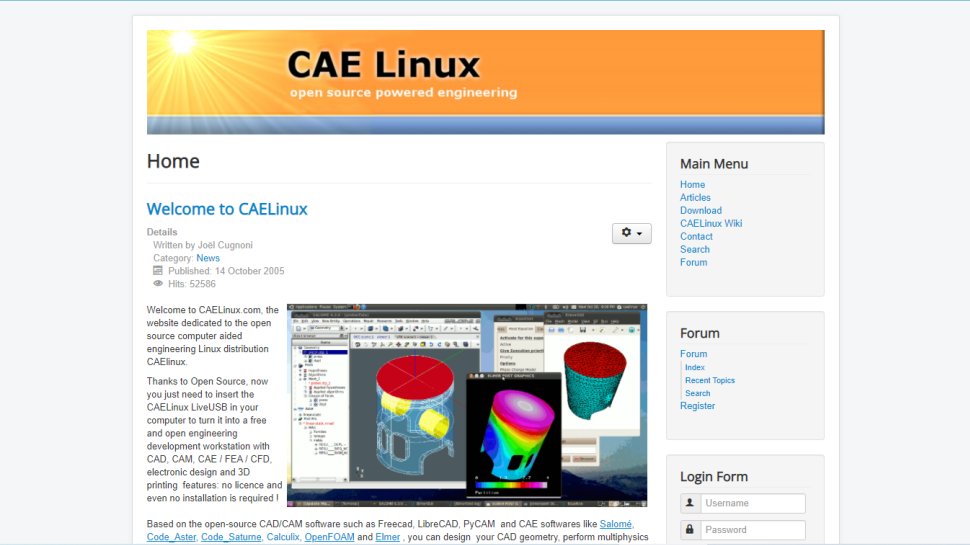
1. CAELinux
Reasons to buy
Reasons to avoid
CAELinux is designed for scientists and engineers and is chock full of computer aided engineering tools. Offered as an installable Live DVD, the latest release of the distro is based on an updated Xubuntu LTS.
The distro covers the full cycle of engineering and product development, from mathematical modeling, to CAD and prototyping by 3D printing. It’ll also help you with electronic PCB design, as well as microcontroller programming. The distro is available in two variants, a Lite edition and a Full version that includes a lot more tools.
This distro's collection of reliable tools is well suited for engineers who don't want to spend money on expensive app licenses. However, keep in mind that some of these tools demand high proficiency for operating and are likely to have a steep learning curve. The project also has enough documentation to help orient first-time users.
Best niche Linux distro for developers
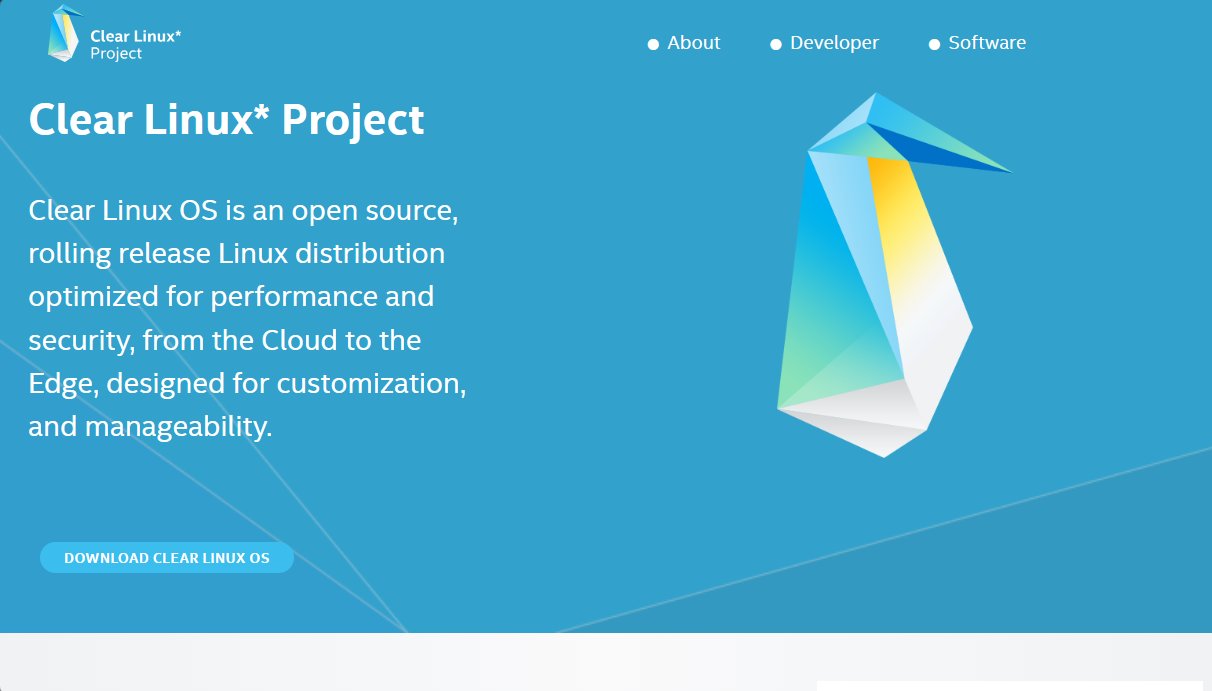
2. Clear Linux
Reasons to buy
Reasons to avoid
Clear Linux is a rolling release distro from Intel that initially targeted only cloud and container deployments, but is now taking on additional use cases.
The USP of Intel’s distro is its performance optimizations for Intel architecture. It ships as a Live ISO image that boots to a Gnome desktop, and now comes equipped with an intuitive graphical installer. The distro is built from scratch and offers several unique characteristics, such as its stateless design, which separates the user and system files on the filesystem.
What is also interesting is its custom package management system that is based on bundles that contain everything an app requires, including its dependencies. The distro supports delta updates, which means it will only fetch the changes and merge them with the installed components, in effect reducing the download size.
Best niche Linux distro for containers
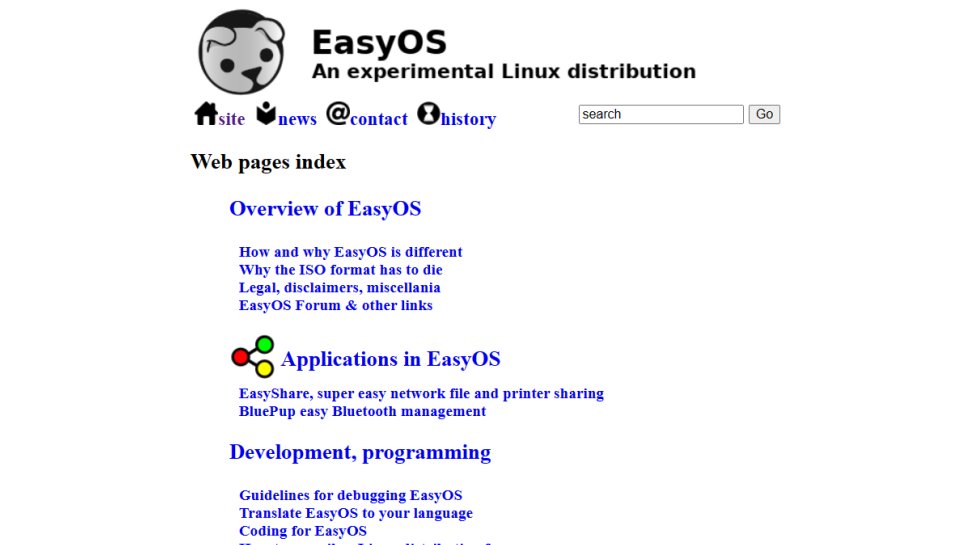
Reasons to buy
Reasons to avoid
EasyOS is an experimental project from the creator of the popular Puppy Linux series of distros. The new project mixes some of the best things about Puppy with new tech, in particular, containers to add new capabilities without additional complexities or computing overheads.
At first glance EasyOS looks and feels just like yet-another variant of Puppy Linux, with the same JWM-ROX-powered retro looking desktop. Despite the similarities, EasyOS isn’t just another fork of Puppy. The goal of the project is to use containers to create a secure, yet easy to use and manage distro. Also, while EasyOS does security by containerised isolation, it doesn’t use any of the existing container technologies like LXC and Docker. Instead, it uses its own home-brewed solution to isolate apps and even complete distros with minimal overhead.
The container-specific advancements reside inside the Filesystem menu. The distro ships with some pre-built containers and you can use the Easy Container Management app to isolate any of the other installed apps inside a container.
Read our full EasyOS review.
Best niche Linux distro for a new filesystem
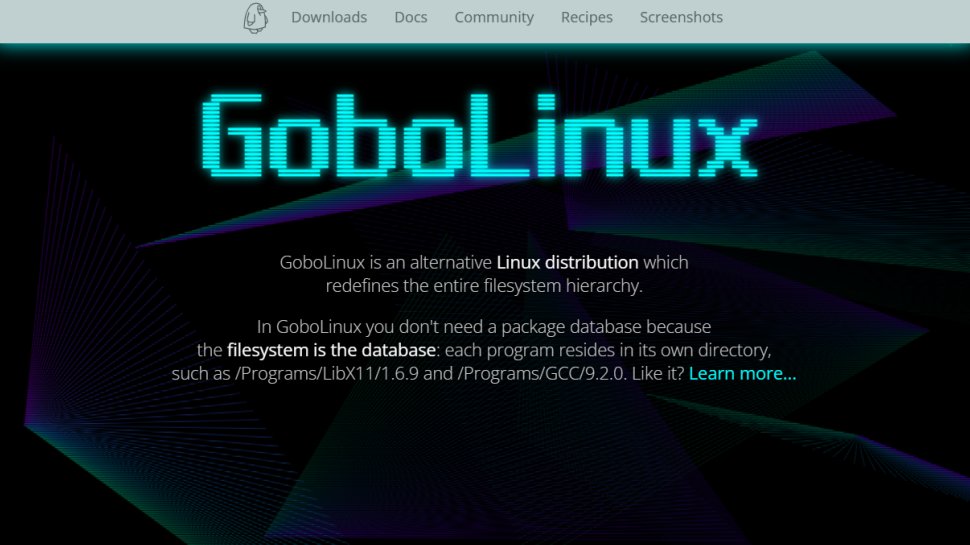
4. GoboLinux
Reasons to buy
Reasons to avoid
This is one that will appeal to the techies out there – the thing that marks GoboLinux out from the rest is its filesystem layout. Most Linux distros use an archaic non-arrangement wherein an application's files are scattered around your hard drive in several different folders. GoboLinux adopts a macOS-like approach (which Apple in turn took from RISC OS), and stores all files associated with an application in a single folder in '/Programs'.
For instance, if you have a program named 'foo' all files pertaining to it would be stored in '/Programs/foo'. You can still install multiple versions of the same application if you wish, for example, for separate users on the system. This is managed by GoboLinux's file virtualization tool Runner.
Another unique tool that the distro relies on is Compile that downloads, and compiles apps from source using simple compilation scripts known as "recipes". The latest release of the distro introduces a simplified model for managing these recipes.
Best niche Linux distro to start from scratch
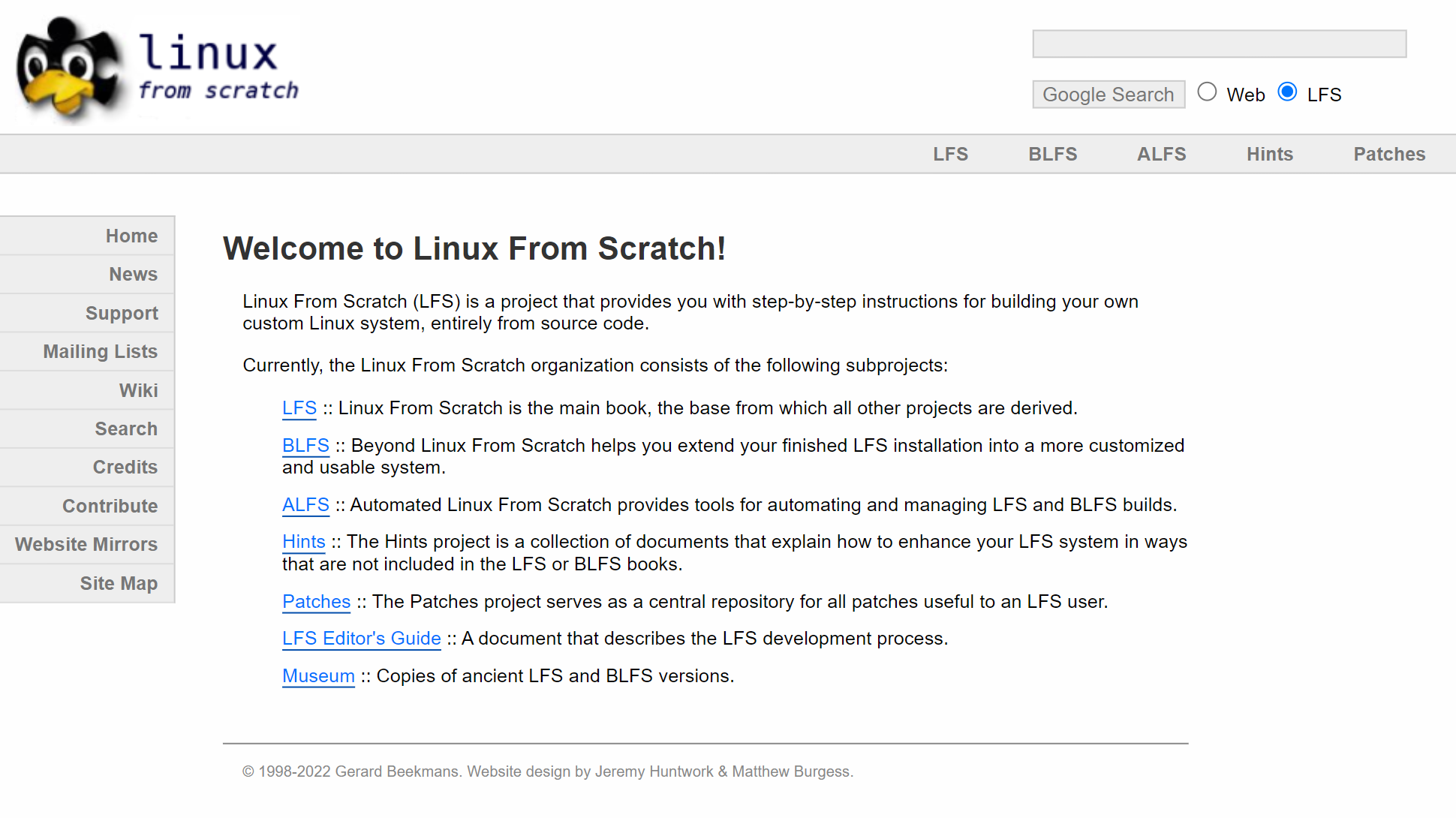
5. Linux From Scratch
Reasons to buy
Reasons to avoid
Linux From Scratch or LFS as it’s popularly known, is actually a book, which painstakingly hand-holds you through the time-consuming process of putting together your own Linux distro.
LFS started in 1999 when its author, Gerard Beekmans, wanted to learn how a Linux distro works behind the scenes. While building his system from scratch, Beekmans wrote down the steps and released it as a how-to, thinking that there would probably be other people who would be interested.
As per the LFS FAQ, “LFS is not intended to create your system as you want it. It’s intended to be just enough to allow you to build your system as you want it. It’s not an end, it’s a beginning. When you’re done with LFS, you’ve just started building your system.”
LFS has grown quite a bit from its humble start and the project has spawned a couple of other books. There’s Beyond LFS for fleshing out your LFS installation, Automated LFS, to help automate the process of creating an LFS system, and Cross LFS that focuses on cross compiling.
Best niche Linux distro for network skills
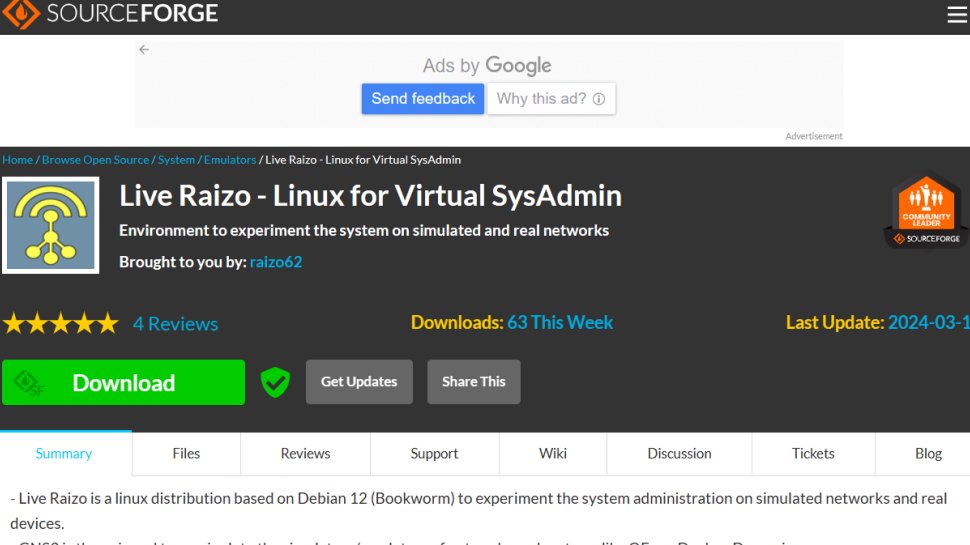
6. Live Raizo
Reasons to buy
Reasons to avoid
Live Raizo is a Debian-based live distro that’ll help you hone your network administration skills by enabling you to practice on a simulated network. The distro is created by a French training center for use in their networking and Linux administration classes.
You can use Live Raizo to create a virtual network thanks to the Graphical Simulator Network (GNS), which can manipulate virtual machines created with Qemu and Docker. According to its website, you can use GNS3 to create as many clones of the template of a virtual machine (VM) named Debian that contains many network tools and services. You can also simulate a 802.11 wireless network between the VMs.
The distro also enables you to connect your simulated network with your physical network and includes all the usual networking tools you need to interact with real devices.
Best niche Linux distro FAQs
How to choose the best weird and wonderful niche Linux distro for you
You’ll have to judge Linux distros across many aspects to find the best niche Linux distro for yourself. For starters, select a distro that can run on your hardware. If you’re using old hardware, go for a lightweight distro that isn’t resource-heavy.
Check out what tools the distro ships with so that you have an idea of its usability. If you’re an engineer or designer, you’ll want to pick a distro that’s suited to your line of work. If you’re not too proficient with Linux, you’ll want to ensure your distro offers plenty of documentation and has a simple learning curve.
How we tested the best niche Linux distros
To test the best weird and wonderful niche Linux distros, we tried out various distros and assessed them across numerous aspects
We considered how different they were from the mainstream distros, what tools and customizability they offered to stand out, and what type of users they’d be suitable for.
We looked at their hardware requirements, their performance across new and old hardware, and the installation speed. We evaluated the distros' learning curve and whether the existing documentation was useful. We also checked whether the online forums for the distros were active and informative.
Read more on how we test, rate, and review products on TechRadar.
Get in touch
- Want to find out about commercial or marketing opportunities? Click here
- Out of date info, errors, complaints or broken links? Give us a nudge
- Got a suggestion for a product or service provider? Message us directly
- You've reached the end of the page. Jump back up to the top ^
Are you a pro? Subscribe to our newsletter
Sign up to the TechRadar Pro newsletter to get all the top news, opinion, features and guidance your business needs to succeed!
With almost two decades of writing and reporting on Linux, Mayank Sharma would like everyone to think he’s TechRadar Pro’s expert on the topic. Of course, he’s just as interested in other computing topics, particularly cybersecurity, cloud, containers, and coding.
